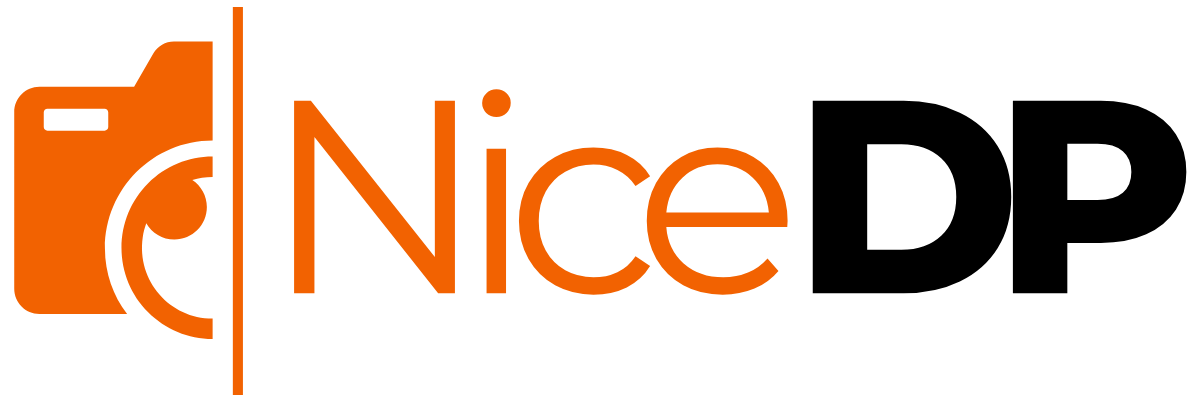Can You Really Start a Business with $0?
The Answer is Yes:)
How to Start an Online Business with No Money may sound like a dream—but it’s a reality for countless entrepreneurs today. Think you need thousands to launch a business? Think again. In today’s digital world, starting an online business without upfront investment is not only possible—it’s happening every single day.
From stay-at-home parents launching blogs to students selling digital products, people are building small businesses from scratch with little more than a laptop and Wi-Fi.
This guide breaks down how you can turn a skill, passion, or idea into a money-making online business—without spending a dime upfront.
1. Shift Your Mindset: Embrace the Possibility
Your first step isn’t a tool or a website. It’s a mindset.
“Start where you are. Use what you have. Do what you can.” – Arthur Ashe
Many successful entrepreneurs began with nothing but drive. For instance, Sophia Amoruso started Nasty Gal as an eBay store with no capital. Now it’s a multi-million dollar fashion brand.
Instead of worrying about what you don’t have, focus on what you do—your time, skills, and hustle.
2. Identify Your Skills and Passions
You don’t need to invent the next Uber. You just need a profitable business idea rooted in what you’re good at and enjoy.
Try the “7 Passions, 7 Fears, 7 Problems” exercise from Studenomics:
✅ 1. 7 Passions
Write down 7 things you genuinely enjoy doing, learning, or talking about. These passions can guide you toward a business idea you’ll be excited to work on every day.
They help ensure you stay motivated even when things get tough.
Examples:
- Fitness – You love working out and learning about health and wellness.
- Photography – You enjoy capturing moments and editing photos.
- Travel – You love exploring new places and cultures.
- Personal growth – You’re into self-help books, habits, and productivity.
- Cooking – You enjoy trying new recipes or meal prepping.
- Gaming – You’re passionate about playing and reviewing video games.
- Teaching – You like explaining things clearly and helping others learn.
✅ 2. 7 Fears
List 7 things that scare you or you’ve personally struggled with. These often reflect what your audience might also be dealing with, making your future business more relatable and impactful.
Solving a fear-based problem creates emotional value.
Examples:
- Public speaking – You feel nervous speaking in front of others.
- Job loss – You fear being financially unstable or unemployed.
- Failing in business – You’re scared to try something and see it flop.
- Debt – You’ve experienced or fear drowning in student loans or credit card debt.
- Social anxiety – You avoid interactions due to overthinking or fear.
- Getting stuck in a 9-to-5 – You fear being stuck in an unfulfilling routine.
- Not achieving your potential – You worry about wasting your talents or time.
✅ 3. 7 Problems
Write down 7 real problems you’ve faced and overcome in life. These problems show where you’ve gained knowledge or practical solutions — which can be turned into a business that helps others.
People pay for real solutions that save time, stress, or money.
Examples:
- Learning graphic design from scratch – You taught yourself and now can help others start.
- Fixing a slow laptop – You figured out how to make it faster without paying for help.
- Starting a side hustle – You found ways to earn extra income and can share the process.
- Losing weight – You followed a personal health journey that others might relate to.
- Overcoming procrastination – You learned techniques that improve focus and productivity.
- Organizing a messy workspace – You created systems for better efficiency and peace of mind.
- Budgeting on a low income – You managed money wisely and can teach others how to do the same.
3. Explore Viable Online Business Models
Let’s break down real business models you can start with zero investment:
🛠 Freelancing
Freelancing is a way of working where individuals offer their skills and services to clients or companies on a project-by-project basis, rather than being employed full-time by a single employer. Freelancers are self-employed and usually work with multiple clients at once.
Offer services like:
✍️ Writing

If you’re good with words, writing is one of the easiest online services to start with zero investment. Businesses constantly need content for blogs, websites, emails, and social media.
- What you can offer: Blog writing, copywriting, product descriptions, or email marketing content.
- Tools needed: Just a laptop and free tools like Google Docs or Grammarly.
- Platforms to get started: Fiverr, Upwork, Freelancer, or direct outreach on LinkedIn.
🎨 Graphic Design

If you’re creative and know how to use design tools, graphic design is a high-demand skill. Many small businesses and entrepreneurs need logos, social media graphics, and branding materials.
- What you can offer: Logo creation, Instagram posts, YouTube thumbnails, website banners, or flyers.
- Tools needed: You can start with free tools like Canva or GIMP; eventually, you can upgrade to Adobe Creative Suite if needed.
- Platforms to get started: 99designs, Fiverr, Upwork, or Behance for portfolio showcasing.
👩💼 Virtual Assistance
A virtual assistant (VA) helps business owners or busy professionals with everyday tasks — all done remotely. This is perfect if you’re organized and good with communication.
- What you can offer: Email management, calendar scheduling, customer support, research, or data entry.
- Skills needed: Strong communication, time management, and familiarity with tools like Google Workspace or Trello.
- Platforms to get started: Belay, Zirtual, Fancy Hands, or remote job boards like OnlineJobs.ph.
Each of these services can be turned into a profitable freelance business model with zero upfront cost. They also help you build a social media presence and connect with potential customers, laying the foundation to start an online business successfully.
📦 Dropshipping

Dropshipping lets you sell physical products without buying inventory upfront. When someone buys from your online store, the supplier ships the item directly to the customer.
- No storage, no packing, no shipping required.
- Start with platforms like: Shopify, Oberlo, or Spocket to find products and manage orders.
👕 Print-on-Demand

Create and sell custom-designed merchandise (like T-shirts, hoodies, mugs, or tote bags) — you design it once, the platform prints and ships it when a customer buys.
- Great for artists, content creators, and niche communities.
- Use platforms like Printify, Redbubble, or Teespring — no upfront cost needed.
📘 Digital Products
Sell digital downloads like eBooks, planners, templates, online courses, or spreadsheets. It’s one of the best ways to earn passive income since you create it once and sell it repeatedly.
- Ideal for creators, educators, or anyone with expertise.
- Use platforms like Gumroad, Payhip, or Etsy (for digital files).
📣 Affiliate Marketing

You earn a commission by recommending other people’s products. No product creation, customer service, or shipping needed — just promote and earn.
- Works well with blogs, YouTube, TikTok, or any social media platform.
- Join affiliate programs like Amazon Associates, ShareASale, or ClickBank.
🎥 Content Creation
Start a blog, podcast, or YouTube channel around a topic you love. As your audience grows, you can monetize through ads, affiliate marketing, sponsorships, or digital products.
- Requires consistency but can generate passive income over time.
- Ideal for building a personal brand and long-term influence.
These models are low-cost, high-opportunity, and can help you reach potential customers globally — especially if you combine them with smart marketing strategies and a solid business plan.
4. Validate Your Business Idea
Don’t build before you test. Use these free methods to validate:
- Poll your audience on social media or Reddit.
- Use Google Trends and AnswerThePublic.
- Study what’s already working in your niche.
- Offer a minimum viable product (MVP)—like a free sample, trial, or stripped-down version.
Listen to feedback before scaling.
5. Set Up Your Online Presence
💻 1. Get a Domain & Hosting
Your domain is your business’s web address (like yourbusiness.com), and hosting is where your website lives online.
- Namecheap is great for buying affordable domain names.
- Bluehost is a reliable hosting provider that works well with WordPress and comes with free SSL and 24/7 support.
📝 Tip: Pick a domain that’s short, easy to spell, and matches your business idea.
🌐 2. Create a Website
Your website is the central hub of your online business — even if you’re just starting with no money.
- Use WordPress + Elementor for full control and design freedom (Elementor is a drag-and-drop builder with free options).
- Want to start an online store? Use Shopify or Ecwid, which come with built-in tools for selling physical or digital products.
🛍️ A well-structured website helps with SEO and builds credibility with potential customers.
🎨 3. Design & Branding
Great design makes your site look professional and memorable. This is where you create your visual identity.
- Use Canva (free and beginner-friendly) to design your logo, pick brand colors, and create headers or social media graphics.
- Keep your design clean, consistent, and easy to navigate — clutter drives people away.
👀 First impressions matter. A clear, trustworthy site builds confidence in your small business.
✅ Setting up your online presence is a must whether you’re doing affiliate marketing, launching online courses, or building a social media presence. It’s your digital home — and your first step toward building a passive income stream.
6. Leverage Free Tools and Resources
You don’t need expensive software. Use these free tools to get started:
- Canva – design graphics and social media content
- Zoom/Skype – client calls
- Trello/Asana – task management
- Mailchimp – basic email marketing
- Google Workspace – docs, forms, sheets, and more
Most offer freemium models that are perfect when you’re just starting.
7. Develop a Marketing Strategy
Without paid ads, your strategy should focus on organic growth:
✅ Content Marketing
Create valuable content like blog posts, YouTube videos, or podcasts that share your knowledge and help your audience.
💡 This builds trust and positions you as an expert over time.
✅ Social Media Marketing
Choose 1–2 social media platforms (like Instagram or LinkedIn) and consistently post content your audience finds helpful or relatable.
💬 Engage by replying to comments, sharing behind-the-scenes, and starting conversations.
✅ Basic SEO
Use free tools like Ubersuggest to find what people are searching for, then naturally include those keywords in your content.
🔍 This helps your site and blog show up on Google and attract potential customers organically.
✅ Networking
Join online communities like Facebook Groups, Reddit (r/Entrepreneur), or niche forums.
🤝 Participate actively, share your journey, ask for feedback, and offer help — it builds trust and opens doors.
These strategies work best together to grow your online presence, even when you’re just getting started with no money.
8. Monetize and Diversify Income Streams
When money starts flowing in, scale with multiple streams:
✅ Offer Tiered Services
Create service packages at different price points (e.g., Basic, Standard, Premium).
💡 This gives potential customers options based on their budget and needs — and lets you upsell higher-value packages.
✅ Upsell Digital Downloads or Extra Features
Offer add-ons like templates, workbooks, or premium features alongside your main service or product.
💰 This increases your average order value without needing new customers.
✅ Add Affiliate Marketing Links to Your Blog or Content
Recommend products or tools you use and trust. When someone buys through your link, you earn a commission.
🔗 Use platforms like Amazon Associates, ClickBank, or ShareASale for affiliate opportunities.
✅ Launch Subscription Models or Paid Communities
Build recurring income by creating a monthly membership, newsletter, or exclusive group (e.g., on Patreon or Discord).
📅 This creates consistent income and builds a loyal customer base.
✅ Sell Online Courses
Turn your knowledge into a structured course (video, PDF, or both) and sell it on platforms like Teachable, Gumroad, or Udemy.
🎓 Courses offer passive income once built, and they scale well as your audience grows.
These income strategies can be stacked together over time to create multiple passive income streams and boost your overall earnings.
The goal? Create reliable, repeatable income.
9. Manage Finances and Reinvest Wisely
You may not start with money, but you’ll need to manage it as you grow.
- Track everything with free tools like Wave or Mint
- Set aside cash for taxes, emergencies
- Reinvest profits into marketing, tech upgrades, or hiring freelancers
This turns your side hustle into a scalable small business.
10. Stay Committed and Adaptable
Your journey won’t be linear.
Setbacks happen. Ideas flop. Platforms change. But success follows those who adapt.
Take inspiration from Redditors in r/Entrepreneur sharing their failures and wins. Or from stories like how Graham Stephan went from broke to millionaire using YouTube.
Keep learning, testing, evolving.
Conclusion: Ready to Start?
You’ve just seen how to start an online business with no money—from identifying skills to building a brand and making your first dollar.
There’s never been a better time to start a business, especially online. The tools are free. The knowledge is out there. The opportunity is waiting.
So what’s stopping you?
Start small. Stay consistent. And build something you’re proud of.
